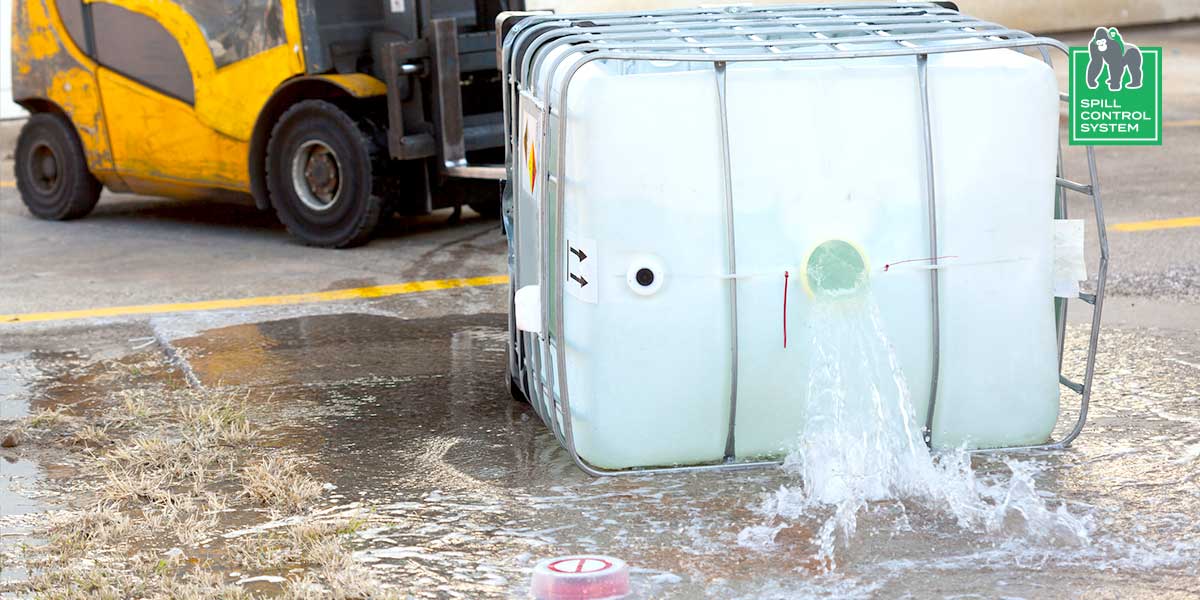
|
Silverback |
|---|
In spill containment, acid spills can be hazardous and tricky to handle due to various factors. Acids can often have a deceptively clear, water-like appearance despite being extremely dangerous to touch and releasing harmful fumes.
Hence, anybody working around acid must be appropriately educated on what they are and what to do during an acid spill.
Handling acid spills requires special care and the right tools. Due to acid's corrosive nature, many spill containment materials are ineffective against acid spills. Using the wrong type of spill kit on an acid spill can worsen the problem. That's why Silverback has compiled a range of Acid Spill Kits specifically designed to contain acid spills.
These kits contain a neutralising absorbent powder that adds an extra layer of safety during clean-up. The absorbent powder helps stabilise the spilled acid, preventing it from spreading further. It aids in reducing harmful vapours and inhalation risk while encapsulating the fluid quickly and efficiently, making clean-up safer and more manageable.
The neutralising agent in the powder assists in raising the pH of the acid, making it safer for handling and disposal.
Absorbent pads or other clean-up methods can lead to acid dripping dangerously, but the absorbent powder in our acid spill kits eliminates this issue. Plus, it offers cost savings by allowing disposal in general landfills once a neutral pH is achieved, unlike the expensive removal of contaminated absorbent materials.

Providing the correct type of spill kit is just one component of a proper spill control system.
For businesses dealing with chemicals, having a comprehensive spill control system is paramount for safety and legal compliance. Silverback's Spill Control System includes site assessment, recommendations, training, and ongoing maintenance. Understanding the chemicals you work with and their implications is part of due diligence. The Silverback system offers assessments and training, ensuring that your workforce is well-prepared during a spill.
When containing a spill, always follow the 4 Cs of spill control. However, for the 4 Cs to be followed in a way that is effective and safe, you must ensure that all workers are adequately educated about substance types and what to do in the instance of a spill.
How you will contain a spill depends on the acid type, so research and education about the acids stored at your site are vital. Assess the spill and consider if it is safe to proceed or if you must evacuate. If it is safe, your first goal should be to eliminate the source of the spill and prevent the situation from worsening. With spills that emit fumes, identifying wind direction is critical to avoiding areas that will be affected as they prevent them from spreading. Notify fire and rescue services if necessary.
Implement appropriate measures to limit the spill's size and spread, but always prioritise safety. Comply with regulations and standards and ensure proper disposal. If an acid has not been correctly neutralised, you will have to call specialists to dispose of it promptly and safely.
Neutralise the spill and treat all materials as hazardous waste unless proven neutralised. Different surfaces require different approaches, and pH test strips can help confirm that the acid has been neutralised.
If you'd like to learn more about the 4 Cs of Spill Control, read our guide here.
Working with high-strength acids in the workplace makes it easy to underestimate household chemicals. However, many everyday chemicals, such as bleach and toilet cleaners, are alkaline solid substances. The knowledge and care you exercise at work should also extend to your home. Small bottles of chemicals at home can be just as hazardous as large ones at work. Always follow safety guidelines and store them properly.
Dealing with acid spills requires specialised equipment and the knowledge to back it up. Whether at work or home, it's crucial to understand the chemicals you handle and be prepared in the event of spills by having the right tools and training. By following best practices and the 4 Cs of spill control, you can effectively manage acid spills and ensure the safety of yourself and those around you.
Be prepared in your workplace and have the support of the experienced team at Silverback.
Silverback's Spill Control System is an all-inclusive process to identify environmental risks and satisfy your compliance needs. It provides effective products, staff training, and ongoing maintenance programs to protect business environmental and WHS needs.
Silverback's industry experience and comprehensive solutions ensure that our clients receive the best outcomes for the safety of their people and environments.
Learn more and register for a FREE site assessment here.